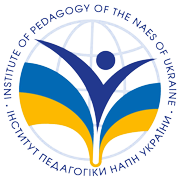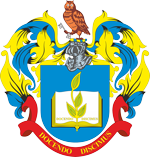Teaching a Foreign Language in Conditions of Mixed Learning in Higher Educational Institutions by Means of Multimedia Technologies
Abstract
The article investigates the use of multimedia technologies in the context of blended learning during foreign language teaching in higher education. The transition to distance learning, due to the pandemic and wartime, was an unexpected and quite serious challenge for all participants in the educational process. The issue of distance education development has become very relevant. And although distance learning is not a substitute for full-time education and was never planned for the long term, it can be an effective tool not only during quarantine and wartime. In such circumstances, we have to accept this challenge and quickly adapt to new realities.
The article presents a concise classification of electronic applications and interactive teaching aids that are convenient to display on the screen of a personal computer, smartphone or multimedia board. Particular attention is paid to the use of some of them during distance learning of a foreign language in a professional field.
Teaching a foreign language with the use of multimedia technologies makes it possible to move from passive presentation of material to an active way of implementing educational activities, in which the student becomes not only the central object of the process, but also an active participant. Thus, the educational process itself is activated by increasing the visibility of the proposed material, there is a more fruitful interactive interaction.
Downloads
References
Болюбаш, Н. М. (2019). Формування педагогічної компетентності магістрів ІТ-спеціальностей засобами освітніх інформаційних технологій. Інформаційні технології і засоби навчання, 71 (3), 70–91.[in Ukrainian]
Мацейко, О. В. (2021). Теоретичні основи використання інформаційно-комунікаційних технологій у професійно-технічній освіті. Сучасні інформаційні технології та інноваційні методики навчання в підготовці фахівців: методологія, теорія, досвід, проблеми, 32, 184–189. [in Ukrainian]
Смирнова-Трибульська, Є. М. (2007). Дистанційне навчання з використанням Moodle. Херсон. [in Ukrainian]
Рашевська, Н. В. (2012). Технології мобільного навчання. Педагогіка вищої та середньої школи, 35, 295–301. [in Ukrainian]
Шуневич, Б. І. (2013). Популяризація дистанційного навчання в освітніх закладах України. Вісник Львівського державного університету безпеки життєдіяльності, 7, 299–303. [in Ukrainian]
Collis, B., & Moonen, J. (2001). Flexible learning in a digital world: experiences and expectations. London: Kogan Page Limited. [in English]
McGee, P., & Reis, A. (2012). Blended Course Design: A Synthesis of Best Practices. Journal of Asynchronous Learning Networks, 16 (4), 7–22. [in English]
Copyright (c) 2022 Pedagogical Discourse

This work is licensed under a Creative Commons Attribution-NonCommercial-ShareAlike 4.0 International License.

















